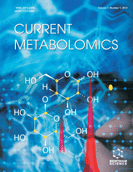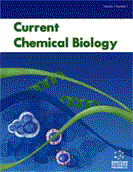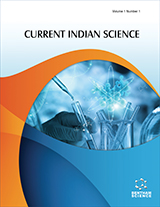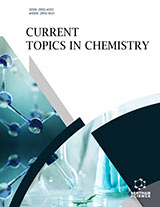Abstract
Background: Hyperlipidemia has been highlighted to be one of the most prominent global health threats. Poria cocos (PC), a well-known traditional Chinese medicine, is used for treating hyperlipidemia in China. To evaluate its therapeutic function on hyperlipidemia, urinary metabolomics was performed.
Method: Diet-induced hyperlipidemic rat model was produced by high fat food, and then the ethanol extract of PC (250 mg/kg) was used to treat hyperlipidemic rats for 6 weeks. Urine samples were analysed using ultra performance liquid chromatographyhigh definition mass spectrometry coupled with partial least squares-discriminant analysis. Box plots, fold changes, one-way analysis of variance, Mann-Whitney U-test, false discovery rate correction, heatmap display and receiver operating characteristic analysis were employed for further analysis of the identified metabolites. Additionally, visualization of metabolic pathways was conducted by ingenuity pathway analysis and Metscape.
Results: Eighteen metabolites were identified including propionylcarnitine, arginine, trimethyltridecanoic acid, methylhippuric acid, aminoadipic acid, citric acid, etc. The metabolites arginine, aminoadipic acid and citric acid were screened as significant biomarkers by various statistical analysis and receiver operating characteristic curves. The results of quantitative enrichment analysis algorithm and cytoscape indicated that thirty-eight metabolic pathways were perturbed by diet-induced hyperlipidemia. The abnormal levels of these metabolites in model group indicated diet-induced hyperlipidemia mainly disturbed amino acid metabolism, tricarboxylic acid cycle, fatty acid metabolism and nucleic acid metabolism. However, PC partially ameliorated these abnormal metabolisms.
Conclusion: PC positively regulated the perturbed metabolisms induced by hyperlipidemia and metabolomics was proven to be suitable for characterizing antihyperlipidemic effect of PC.
Keywords: Hyperlipidemia, Poria cocos, metabolomics, biomarker, ultra-performance liquid chromatography, high definition mass spectrometry.
Current Metabolomics
Title:Metabolomics Reveals Hyperlipidemic Biomarkers and Antihyperlipidemic Effect of Poria cocos
Volume: 4 Issue: 2
Author(s): Hua Chen, Lin Chen, Dan-Dan Tang, Dan-Qian Chen, Hua Miao, Ying-Yong Zhao and Shuang-Cheng Ma
Affiliation:
Keywords: Hyperlipidemia, Poria cocos, metabolomics, biomarker, ultra-performance liquid chromatography, high definition mass spectrometry.
Abstract: Background: Hyperlipidemia has been highlighted to be one of the most prominent global health threats. Poria cocos (PC), a well-known traditional Chinese medicine, is used for treating hyperlipidemia in China. To evaluate its therapeutic function on hyperlipidemia, urinary metabolomics was performed.
Method: Diet-induced hyperlipidemic rat model was produced by high fat food, and then the ethanol extract of PC (250 mg/kg) was used to treat hyperlipidemic rats for 6 weeks. Urine samples were analysed using ultra performance liquid chromatographyhigh definition mass spectrometry coupled with partial least squares-discriminant analysis. Box plots, fold changes, one-way analysis of variance, Mann-Whitney U-test, false discovery rate correction, heatmap display and receiver operating characteristic analysis were employed for further analysis of the identified metabolites. Additionally, visualization of metabolic pathways was conducted by ingenuity pathway analysis and Metscape.
Results: Eighteen metabolites were identified including propionylcarnitine, arginine, trimethyltridecanoic acid, methylhippuric acid, aminoadipic acid, citric acid, etc. The metabolites arginine, aminoadipic acid and citric acid were screened as significant biomarkers by various statistical analysis and receiver operating characteristic curves. The results of quantitative enrichment analysis algorithm and cytoscape indicated that thirty-eight metabolic pathways were perturbed by diet-induced hyperlipidemia. The abnormal levels of these metabolites in model group indicated diet-induced hyperlipidemia mainly disturbed amino acid metabolism, tricarboxylic acid cycle, fatty acid metabolism and nucleic acid metabolism. However, PC partially ameliorated these abnormal metabolisms.
Conclusion: PC positively regulated the perturbed metabolisms induced by hyperlipidemia and metabolomics was proven to be suitable for characterizing antihyperlipidemic effect of PC.
Export Options
About this article
Cite this article as:
Chen Hua, Chen Lin, Tang Dan-Dan, Chen Dan-Qian, Miao Hua, Zhao Ying-Yong and Ma Shuang-Cheng, Metabolomics Reveals Hyperlipidemic Biomarkers and Antihyperlipidemic Effect of Poria cocos, Current Metabolomics 2016; 4 (2) . https://dx.doi.org/10.2174/2213235X04999160603155430
| DOI https://dx.doi.org/10.2174/2213235X04999160603155430 |
Print ISSN 2213-235X |
| Publisher Name Bentham Science Publisher |
Online ISSN 2213-2368 |
 50
50 4
4Related Articles
-
β-Synuclein Assembly as a Therapeutic Target of Parkinsons Disease and Related Disorders
Current Pharmaceutical Design Adipose Tissue as a Regulator of Energy Balance
Current Drug Targets Formation and Structure of a Novel Nitration Product of δ -Tocopherol
Current Organic Synthesis Platelets and Platelet-Derived Microvesicles as Immune Effectors in Type 2 Diabetes
Current Vascular Pharmacology How Much Gets there and What Does it Do?: The Need for Better Pharmacokinetic and Pharmacodynamic Endpoints in Contemporary Drug Discovery and Development
Current Pharmaceutical Design Fructose 1,6-Bisphosphate: A Summary of Its Cytoprotective Mechanism
Current Medicinal Chemistry LPS In Patients With Left Ventricular Dysfunction Of Ischemic And Non-Ischemic Origin
Cardiovascular & Hematological Disorders-Drug Targets Complementary Role of Herbal Medicine and Exercise in Cardiovascular Disease Prevention and Management: A Review of Evidence
Current Pharmaceutical Design Preoperative Plasma Aldosterone Levels and Postoperative Atrial Fibrillation Occurrence Following Cardiac Surgery: A Review of Literature and Design of the ALDO-POAF Study (ALDOsterone for Prediction of Post-Operative Atrial Fibrillation)
Current Clinical Pharmacology A Review of Dietary Influences on Cardiovascular Health: Part 2: Dietary Patterns
Cardiovascular & Hematological Disorders-Drug Targets DYRK1A: A Potential Drug Target for Multiple Down Syndrome Neuropathologies
CNS & Neurological Disorders - Drug Targets Pharmacogenetics and Statin Treatment: Reality or Theory?
Current Vascular Pharmacology The Role of Statins in the Activation of Heme Oxygenase-1 in Cardiovascular Diseases
Current Drug Targets Cardiac-Specific Expression of the Hepatocyte Growth Factor (HGF) Under the Control of a TnIc Promoter Confers a Heart Protective Effect After Myocardial Infarction (MI)
Current Gene Therapy Onco-Surgical Management of Colo-Rectal Liver Metastases in Older Patients: A New Frontier in the 3<sup>rd</sup> Millennium
Anti-Cancer Agents in Medicinal Chemistry Metabolic Obesity: The Paradox Between Visceral and Subcutaneous Fat
Current Diabetes Reviews Interplay of Breast Cancer Resistance Protein (BCRP) and Metabolizing Enzymes
Current Drug Metabolism Molecular Mechanisms of Inherited Arrhythmias
Current Genomics Small Players With Big Roles: MicroRNAs as Targets to Inhibit Breast Cancer Progression
Current Drug Targets Macrophage Polarization as a Therapeutic Target in Myocardial Infarction
Current Drug Targets









.jpeg)








